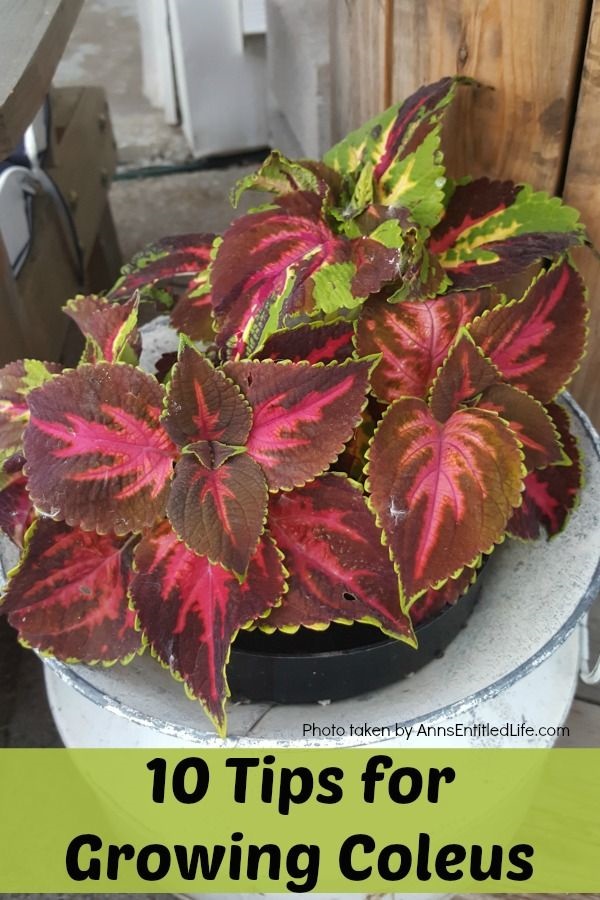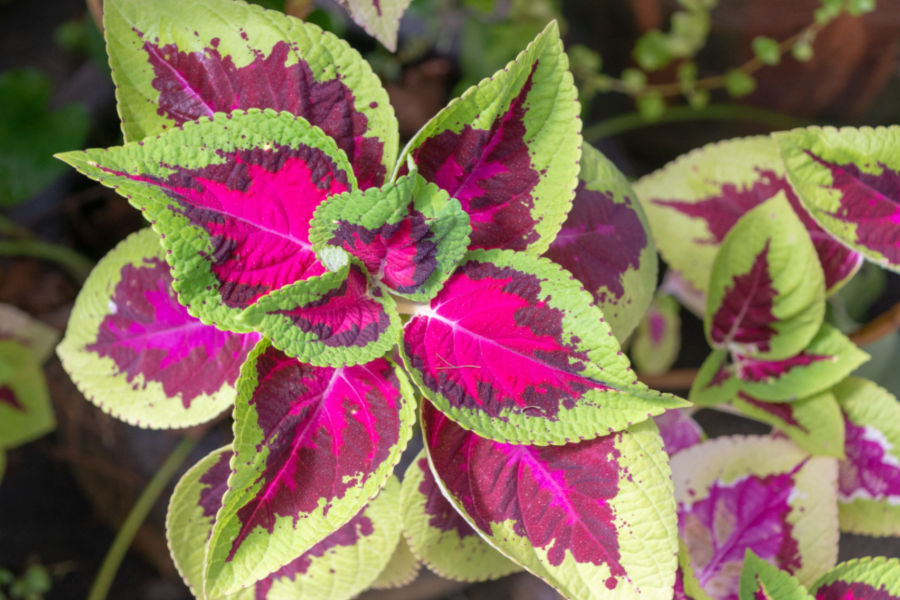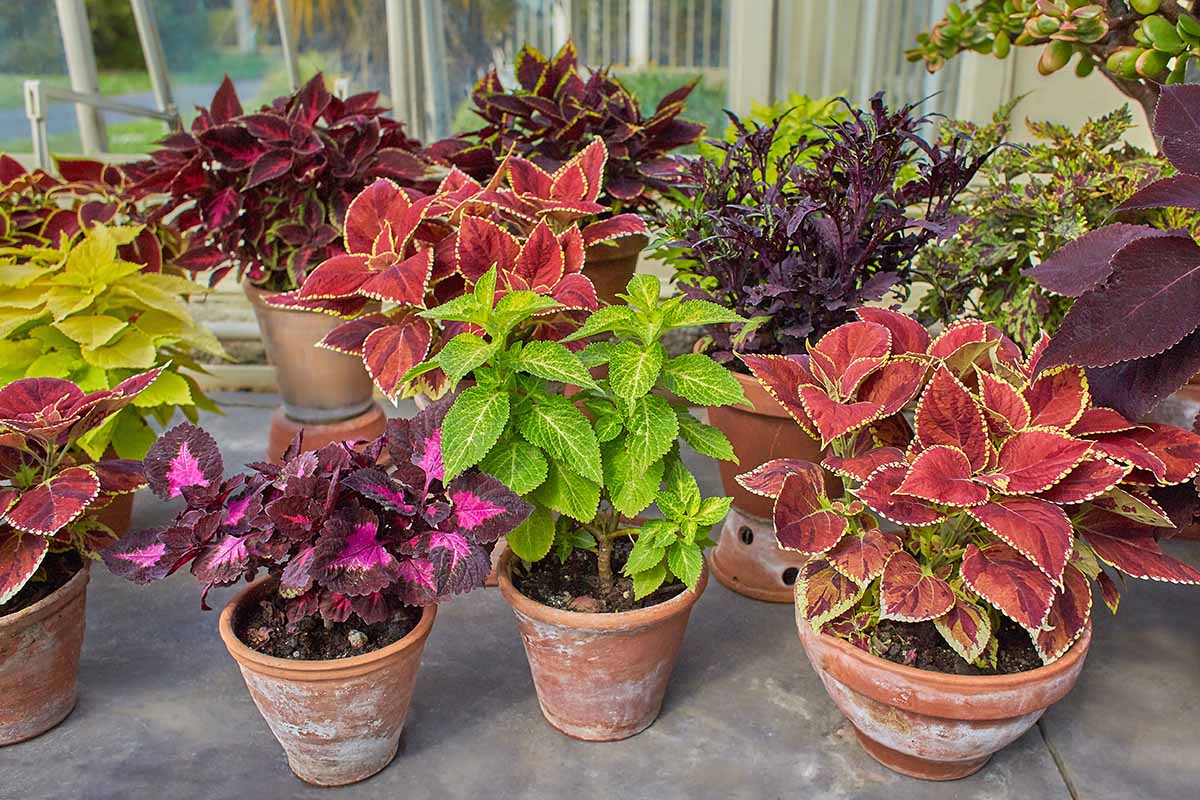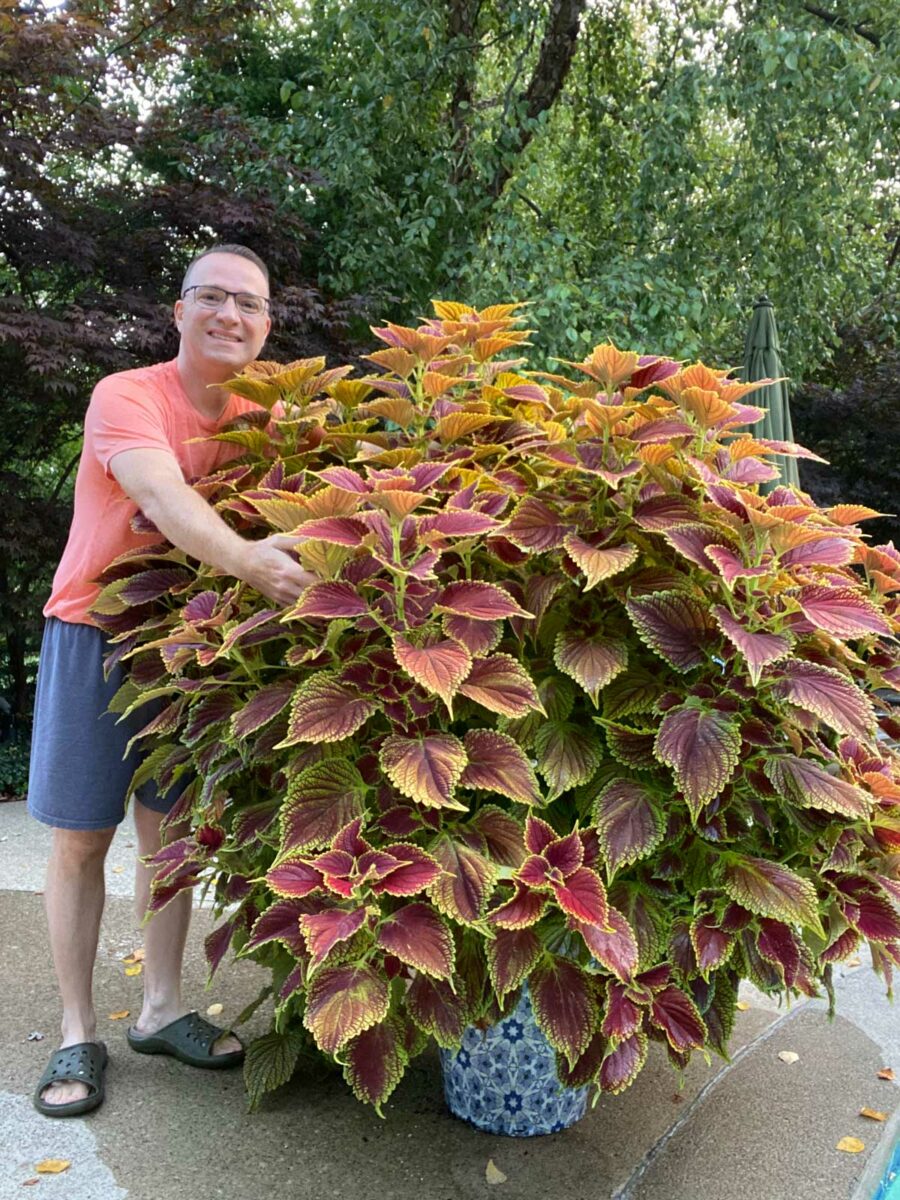What is a Coleus Plant: Understanding its Characteristics
Coleus, a member of the mint family, is a versatile and vibrant plant that has been a favorite among gardeners for centuries. Native to tropical regions of Asia and Africa, coleus has adapted to thrive in a wide range of environments, from indoor containers to outdoor gardens. Its unique features, including its striking foliage and ability to grow in various lighting conditions, have led to its popularity as both an annual and perennial plant. However, the question remains: is a coleus a perennial? To answer this, it’s essential to understand the plant’s characteristics and growth habits.
Coleus plants are known for their colorful, intricately patterned leaves, which can range in color from deep purple to bright green. They can grow up to 3 feet tall and 2 feet wide, making them an excellent choice for adding a pop of color to gardens and indoor spaces. Coleus is also a low-maintenance plant, requiring minimal care and attention to thrive. This has led many gardeners to wonder whether coleus is a perennial plant, capable of regrowing year after year.
Despite its adaptability, coleus is often misunderstood as an annual or perennial plant. In reality, coleus is a tender perennial, meaning it can regrow in warmer climates but may not survive harsh winters. In areas with frost, coleus is typically grown as an annual, while in warmer regions, it can be grown as a perennial. Understanding the plant’s life cycle and growth habits is crucial to determining whether coleus is a perennial plant.
Is Coleus a Perennial: Separating Fact from Fiction
One of the most common questions about coleus is whether it is a perennial plant. The answer to this question is not a simple yes or no. Coleus is a tender perennial, meaning it can regrow in warmer climates but may not survive harsh winters. In areas with frost, coleus is typically grown as an annual, while in warmer regions, it can be grown as a perennial.
So, is a coleus a perennial? The answer depends on the specific growing conditions. In general, coleus is a perennial plant in USDA Hardiness Zones 9-11, where the temperature remains above 64°F (18°C) throughout the year. In these zones, coleus can regrow year after year, making it a great choice for gardeners who want to add a pop of color to their gardens.
However, in areas with frost, coleus is typically grown as an annual. In these regions, the plant will not survive the winter months, and gardeners will need to replant it every spring. Despite this, coleus can still be grown as a perennial in containers or indoor spaces, where it can be protected from frost and extreme temperatures.
Factors that affect the longevity of coleus include temperature, light, and watering. Coleus prefers well-draining soil and partial shade to full sun, depending on the variety. It also requires consistent moisture, but can be susceptible to root rot if the soil is too wet. By providing the right conditions, gardeners can encourage their coleus plants to regrow year after year, making it a great choice for gardeners who want to add a low-maintenance perennial to their gardens.
How to Grow Coleus as a Perennial: Tips and Tricks
Growing coleus as a perennial plant requires careful attention to its specific needs. To encourage coleus to regrow year after year, it’s essential to provide the right conditions, including temperature, light, and watering. In general, coleus prefers well-draining soil and partial shade to full sun, depending on the variety.
One of the most critical factors in growing coleus as a perennial is temperature. Coleus thrives in temperatures between 65°F (18°C) and 75°F (24°C), making it an ideal choice for indoor spaces or containers. In areas with frost, coleus can be grown as an annual, but in warmer regions, it can be grown as a perennial.
Lighting is also crucial for coleus growth. While coleus can tolerate full sun, it prefers partial shade, especially in warmer climates. In areas with intense sunlight, it’s essential to provide coleus with some shade to prevent scorching. In contrast, coleus grown in indoor spaces can thrive in low-light conditions, making it an excellent choice for rooms with limited natural light.
Watering is another critical factor in growing coleus as a perennial. Coleus prefers consistent moisture, but can be susceptible to root rot if the soil is too wet. To prevent this, it’s essential to water coleus carefully, making sure the soil is moist but not waterlogged. In areas with high humidity, it’s also essential to ensure good air circulation to prevent fungal diseases.
Growing coleus in containers or indoor spaces can be an excellent way to encourage it to regrow year after year. Containers provide the flexibility to move coleus to different locations, depending on the season, while indoor spaces offer a controlled environment that can be tailored to the plant’s specific needs. By providing the right conditions and care, gardeners can enjoy the vibrant foliage of coleus for years to come.
Coleus Care 101: Essential Tips for a Thriving Plant
Coleus care is relatively straightforward, but it does require attention to a few key areas. By following these essential tips, gardeners can help their coleus plants thrive and enjoy their vibrant foliage for months to come.
Pruning is an essential part of coleus care. Regular pruning helps to maintain the plant’s shape, encourages new growth, and promotes healthy foliage. To prune coleus, simply pinch off any leggy stems or dead leaves, and trim back the plant to maintain its desired shape.
Fertilization is also crucial for coleus care. Coleus plants benefit from regular feeding, especially during the growing season. Use a balanced fertilizer that is high in phosphorus to promote healthy root growth and vibrant foliage. Avoid over-fertilizing, as this can damage the plant and lead to weak growth.
Pest management is another important aspect of coleus care. Coleus plants are susceptible to pests such as aphids, whiteflies, and spider mites. Regularly inspect the plant for signs of pests, and take action promptly if you notice any issues. Use organic pest control methods whenever possible, such as neem oil or insecticidal soap.
Monitoring the plant’s health is also essential for coleus care. Regularly inspect the plant for signs of disease or pests, and take action promptly if you notice any issues. Keep an eye out for common problems such as root rot, leaf spot, and powdery mildew, and take steps to prevent them from occurring.
By following these essential tips, gardeners can help their coleus plants thrive and enjoy their vibrant foliage for months to come. Whether you’re growing coleus as a perennial or an annual, proper care is essential for promoting healthy growth and preventing common problems.
Coleus Varieties: Choosing the Right Type for Your Garden
Coleus is a versatile plant that comes in a wide range of varieties, each with its unique features, growth habits, and colors. With so many options available, choosing the right type of coleus for your garden can be overwhelming. In this section, we’ll explore some of the most popular coleus varieties and help you choose the best one for your specific needs and preferences.
One of the most popular coleus varieties is the ‘Kong’ series, which is known for its large, vibrant leaves and compact growth habit. This variety is perfect for containers or small gardens, and comes in a range of colors including red, orange, yellow, and green.
Another popular variety is the ‘Rainbow’ series, which is known for its brightly colored leaves with intricate patterns. This variety is perfect for adding a pop of color to your garden, and comes in a range of colors including pink, purple, and white.
For a more subtle look, consider the ‘Velvet’ series, which is known for its soft, velvety leaves and compact growth habit. This variety is perfect for adding texture and interest to your garden, and comes in a range of colors including green, gold, and bronze.
When choosing a coleus variety, consider the specific growing conditions in your garden. If you have a lot of shade, consider a variety like ‘Black Prince’, which is known for its dark, almost black leaves and ability to thrive in low-light conditions. If you have a lot of sun, consider a variety like ‘Sunset’, which is known for its bright, orange-red leaves and ability to tolerate high temperatures.
Ultimately, the right coleus variety for your garden will depend on your specific needs and preferences. By considering factors like growth habit, leaf color, and growing conditions, you can choose a variety that will thrive in your garden and add beauty and interest to your outdoor space.
Common Mistakes to Avoid When Growing Coleus
While coleus is a relatively easy plant to grow, there are some common mistakes that can lead to plant failure. By avoiding these mistakes, you can ensure a healthy and thriving coleus plant that will provide you with beautiful foliage for months to come.
One of the most common mistakes when growing coleus is overwatering. Coleus prefers well-draining soil and can be susceptible to root rot if the soil is too wet. To avoid this, make sure to water your coleus plant carefully, and avoid getting water on the leaves to prevent fungal diseases.
Underwatering is another common mistake that can lead to coleus plant failure. Coleus needs consistent moisture to thrive, especially when it’s producing new growth. Make sure to water your coleus plant regularly, but avoid overwatering, which can be detrimental to the plant’s health.
Inadequate light is another common mistake that can affect coleus growth. Coleus prefers bright, indirect light, but can tolerate some direct sunlight. However, if the light is too intense, it can cause the leaves to become scorched and the plant to become stressed. To avoid this, make sure to provide your coleus plant with the right amount of light, and consider using a sheer curtain to filter the sunlight.
Not providing enough nutrients is another common mistake that can affect coleus growth. Coleus is a heavy feeder and needs regular fertilization to thrive. Make sure to use a balanced fertilizer that is high in phosphorus to promote healthy root growth and vibrant foliage.
Not pruning the plant regularly is another common mistake that can affect coleus growth. Pruning helps to maintain the plant’s shape, encourages new growth, and promotes healthy foliage. Make sure to prune your coleus plant regularly, and remove any dead or dying leaves to prevent the spread of disease.
By avoiding these common mistakes, you can ensure a healthy and thriving coleus plant that will provide you with beautiful foliage for months to come. Remember to provide your coleus plant with the right conditions, including temperature, light, and watering, and take steps to prevent common issues like overwatering, underwatering, and inadequate light.
Coleus in the Garden: Companion Planting and Design Ideas
Coleus is a versatile plant that can be used in a variety of garden designs, from containers to landscapes. When used in combination with other plants, coleus can add a pop of color and texture to the garden. In this section, we’ll explore some ideas for using coleus in garden design, including companion planting and landscape ideas.
One of the best ways to use coleus in garden design is through companion planting. Coleus pairs well with a variety of plants, including flowers, herbs, and vegetables. Some popular companion plants for coleus include marigolds, zinnias, and basil. These plants complement the colorful foliage of coleus and can help to attract beneficial insects to the garden.
Container gardening is another great way to use coleus in garden design. Coleus thrives in containers and can be used to add a splash of color to patios, decks, and balconies. When choosing a container for coleus, make sure to select one that is at least 6-8 inches deep to accommodate the plant’s root system.
Landscape design is another area where coleus can be used to great effect. Coleus can be used as a border plant, a accent plant, or even as a groundcover. When using coleus in landscape design, make sure to choose a variety that is compact and well-behaved, such as ‘Kong’ or ‘Rainbow’.
Some inspiring examples of coleus in garden design include using coleus as a focal point in a container garden, or as a border plant in a landscape bed. Coleus can also be used to add a pop of color to a garden path or walkway.
When using coleus in garden design, make sure to consider the plant’s growing conditions and needs. Coleus prefers well-draining soil and partial shade to full sun, depending on the variety. Make sure to provide coleus with the right conditions to thrive, and enjoy the beautiful foliage and colorful blooms that this plant has to offer.
Conclusion: Unlocking the Full Potential of Coleus
In conclusion, coleus is a versatile and beautiful plant that can add a pop of color and texture to any garden or indoor space. By understanding the unique characteristics of coleus, including its vibrant foliage and adaptability to different environments, gardeners can unlock the full potential of this plant.
As we’ve discussed throughout this article, coleus is often misunderstood as an annual or perennial plant. However, with the right conditions and care, coleus can be grown as a perennial plant, providing beautiful foliage and colorful blooms for months to come.
By following the tips and tricks outlined in this article, gardeners can learn how to grow coleus as a perennial plant, including providing the right conditions, such as temperature, light, and watering. We’ve also explored the different types of coleus plants, including their unique features, growth habits, and colors, and provided guidance on how to choose the best variety for specific needs and preferences.
In addition to its beauty and versatility, coleus is also a low-maintenance plant that can thrive in a variety of environments. By understanding the common mistakes to avoid when growing coleus, such as overwatering, underwatering, and inadequate light, gardeners can ensure a healthy and thriving plant.
Finally, we’ve explored the possibilities of using coleus in garden design, including companion planting, container gardening, and landscape ideas. By incorporating coleus into their garden design, gardeners can add a pop of color and texture to their outdoor space.
In summary, coleus is a beautiful and versatile plant that can add a pop of color and texture to any garden or indoor space. By understanding the unique characteristics of coleus and following the tips and tricks outlined in this article, gardeners can unlock the full potential of this plant and enjoy its beauty for months to come.









